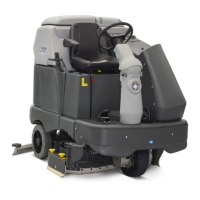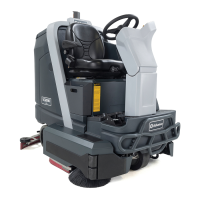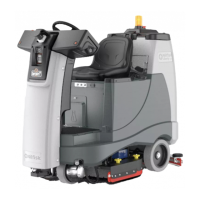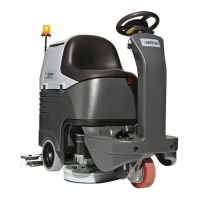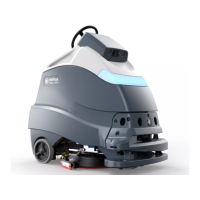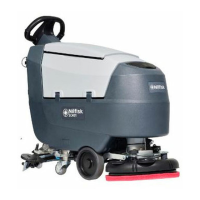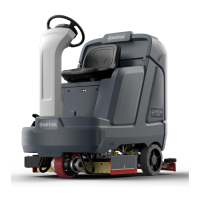Squeegee System 160Service Manual – SC6500
™
4. Measure the position of the Actuator Drive Nut on the shaft and compare the measurement with the OUT
position shown in the table below.
Part # Actuator Motor Actuator Drive Nut
IN Position
Actuator Drive Nut
OUT Position
Models
56413111 Squeegee Lift 1-1/4” [3.17cm] 3-1/8” [7.93cm] All
5. If the OUT measurement doesn’t match the dimension shown in the table, remove the Adjuster Cover and
adjust the OUT position as follows:
• To increase the travel of the Actuator Drive Nut, turn the adjuster clockwise.
• To decrease the travel of the Actuator Drive Nut, turn the adjuster counterclockwise.
Note: Use a 1/2” (13 mm) socket to turn the adjuster. Each click of the adjuster will change the
Actuator Drive Nut 1/16 inch (1.6 mm).
6. Hold the Actuator Drive Nut, run the actuator in and out and check both dimensions after each
adjustment.
7. When the Actuator Drive Nut limits are set correctly, replace the Adjuster Cover.
Troubleshooting
Problem Cause Correction
Problem Cause Solution
Poor water pick-up Clogged vacuum hose Check the vacuum hose and clear/clean as
necessary.
Vacuum leaks Check the squeegee tool and vacuum hose for leaks
or cracks and repair/replace as necessary.
The squeegee tilt and/or
height is set incorrectly,
Adjust the squeegee tilt and/or height as necessary.
The squeegee
leaves narrow
streaks of water.
The blades are dirty or
damaged
Remove the squeegee, rinse it under warm water
and inspect the blades.
Reverse or replace the blades if they are cut, torn,
wavy or worn.
The squeegee lift
actuator will not
raise or lower the
squeegee.
Squeegee actuator overload
(error code
11 displayed)
• Normal current load is 1-2
amps.
• Max current load is 6
amps.
• Max current with no load
is 1.4 amps.
1. Check for binding or frozen squeegee lift linkage
and excessive weight on the squeegee mount.
2. Check for a short circuit in the actuator motor and
wiring. Repair or replace.
To test the actuator, disconnect the motor plug
and attach the actuator power cord adapter (p/n
56407502) and perform an amp draw test. Compare
readings to the current load specications.
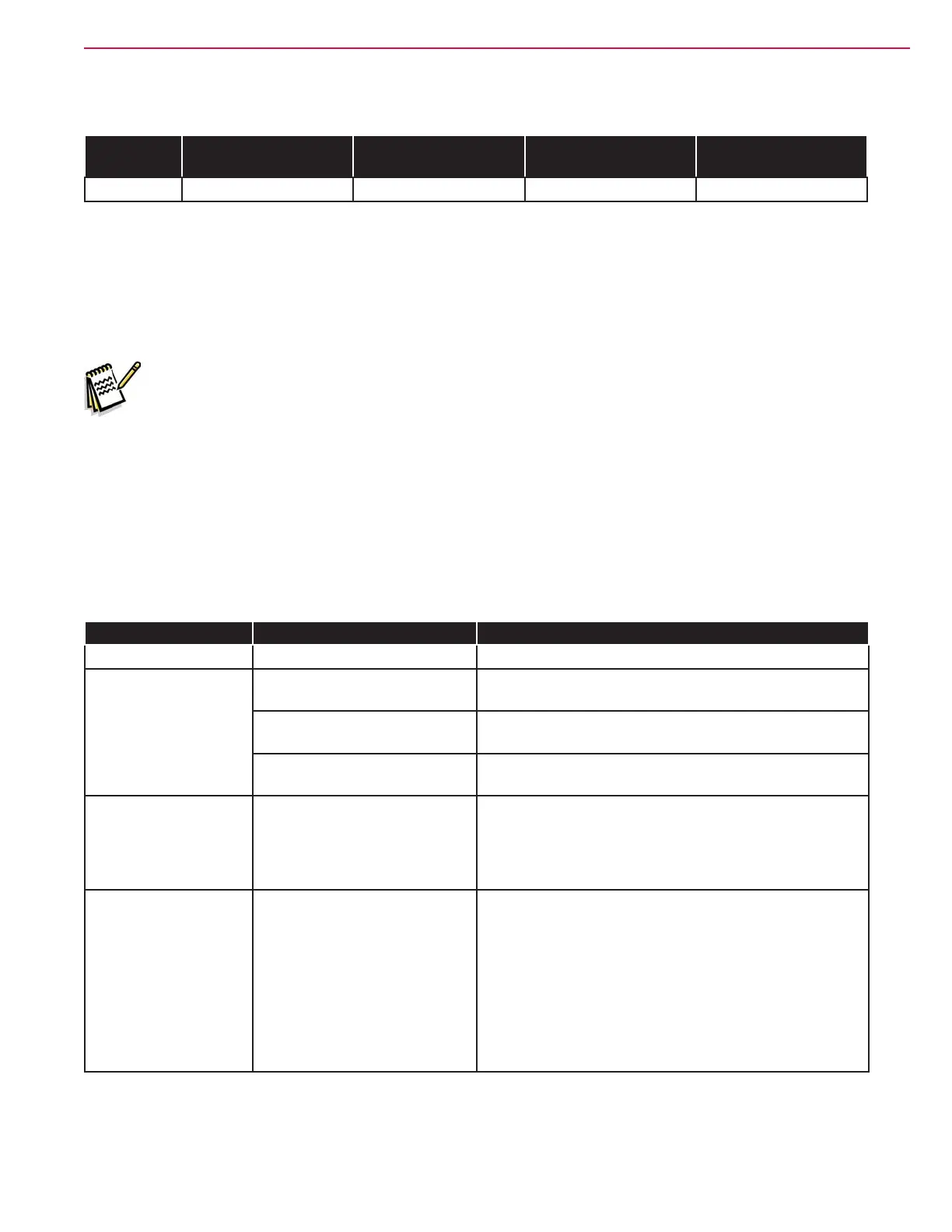